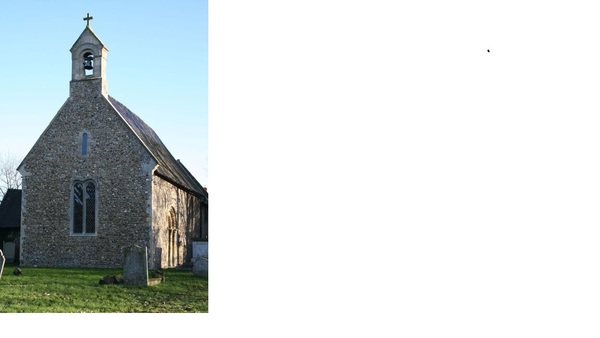St Margaret of Antioch Parish Church
The Parish Church of St Margaret of Antioch sits in its churchyard half hidden by trees and greenery. It is separated from the vast majority of the village on the A1060 as you approach Garnish Hall. It is a simple grade 1 listed building surrounded by a quiet and tranquil space. It is the oldest church in the area and dates from the Norman period. Access to the church is via the track adjacent to Church Cottage, there is a white finger directional finger post indicating the entrance. Please take care when entering and exiting the church as the access is concealed and visibility restricted.
The parish church of Margaret Roding is part of the Rodings, Easters and Great Canfield Benefice, a group of ten rural churches. Details on church services, baptisms, weddings, funerals, events and contact details can be found on the benefice website.
You can see photos of the church in the Photo Album.
Church history: MARGARET RODING VILLAGE CHURCH by Marion Polley
The village of Margaret Roding has links right back to prehistory. The River Roding was named after Hroda the Saxon who is known to have dwelt here with his tribe for many years from the sixth century. The oldest surviving building is the parish church which is an historic monument of special note.
This tiny, yet remarkable, church of St. Margaret of Antioch stands secluded amongst the trees and set back from the main A1060 road in the north-west of the village of Margaret Roding.
The church is built to a simple plan – the nave with its three-foot walls being constructed in the late C12 and the chancel which was rebuilt in the fourteenth century.It is similar to many small churches throughout England within one hundred and fifty years of the Norman Conquest, yet it is unique amongst our group of eight Rodings villages.
The church was restored in the nineteenth century when the north vestry was added along with the bell-cote which houses a single bell. There is a surviving picture which shows a steeple and porch from times previous to the restoration. The walls of the church are made of flint rubble with limestone dressing and the roof is of slate.
The twelfth century south doorway is a spectacular architectural feature, a beautifully ornate and exceptional example of twelfth century stonemasonry.
The windows date from the twelfth to the nineteenth century. During the nineteenth century restoration some of these were fitted with stained glass and the plaster of the interior walls was renewed. It was then that the chancel walls were painted with biblical scenes of saints and angels, our Lord and the Virgin Mary. The war memorial window commemorates eight men from World War I and two from World War II who came from this parish.
Originally the church would have had its own parish priest, but with a small congregation now in the village it is part of a group of ten churches. The annual Christmas carol service rings out with song and reminds us how popular life in St. Margaret’s would have been in previous times. It is very much valued in the village as part of a heritage which is marked by a thousand years of continuous habitation.
